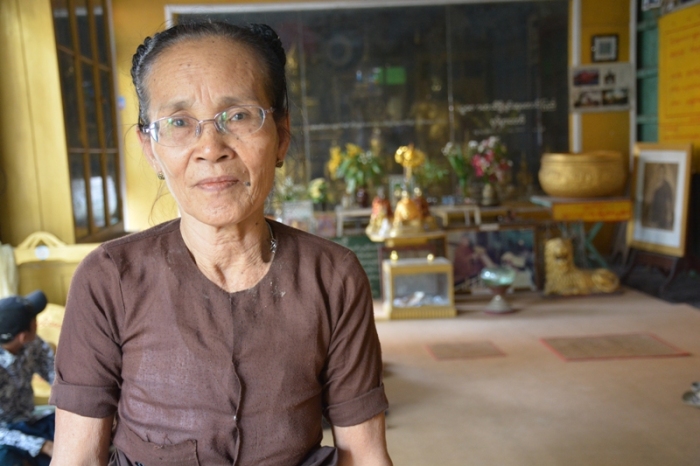Posts Tagged ‘Mahn Win Maung’
Arlein Nga Sint: The dream pagoda

As a Buddhist monk living in the Ayeyarwady delta in the mid-20th century, U Thuri Ya had a dream – three dreams, in fact, of a strangely fanciful pagoda rising out of the jungle in Yangon’s northern outskirts.

With these nocturnal visions, U Thuri Ya was carrying on a family tradition of sorts: When his mother had been pregnant with him, she had dreamed that she was bearing a white elephant in her womb, a harbinger of her son’s dedication and contribution to Buddhism.
U Thuri Ya, an ethnic Karen, happily complied with this omen. At the age of six he began his monastic education, at 12 he became a novice and at 19 he entered the Sangha as a monk. After dreaming his own pagoda dreams, he moved to Yangon to make his visions reality.

Later becoming known as Maha Saywingaba Sayadaw, he found land in Insein township, about 10 miles (16 kilometres) north of downtown’s Sule Pagoda. Now dominated by the busy confluence of Pyay, Lanthit and Insein Butaryon roads, 70 years ago the area was heavily forested and home to leopards and other wildlife. He paid K25,000 for a 5-acre compound and got to work raising funds by accepting donations from well-wishers throughout the country.
Construction on the Arlein Nga Sint Pagoda compound began in 1954, with the first bricks laid by Prime Minister U Nu and Mahn Win Maung, an ethnic Karen politician who served in various ministerial positions during the decade leading up to his appointment as president of Burma in 1957.
Among the structures that were completed during U Thuri Ya’s lifetime was Aung Dhamma Yone Monastery, as well as the central Arlein Nga Sint Pagoda, a uniquely baroque seven-tiered structure symbolizing the seven levels of paradise and coated with 100 viss (360 pounds or 160 kilograms) of gold. The pagoda is surrounded by a low-walled labyrinth; an onion-domed tower with a staircase winds around the outside, completed the phantasmagorical picture. It remains one of the more unusual pagodas in Myanmar.

U Thuri Ya was aided in his project by a monk named U Agga Dhamma, who traveled to Lalti Monastery in Monywa township, where he had stayed before moving to Yangon, to hire a well-known carpenter from the region to build the pagoda.
After U Thuri Ya’s passing, U Agga Dhamma carried on with the work, and another round of visions provided further guidance: On three consecutive days, he dreamed during afternoon naps of a man dressed in white advising him to place a large green-colored Buddha inside the pagoda. The apparition helpfully added that the monk could find a small statue nearby, which he was to use as the model for the bigger image.
U Agga Dhamma was unsure whether to believe the dream, but in Myanmar Buddhism white-clad men are assumed to be good spirits, so he started searching for the model image. To his surprise he found a small green Buddha in a cupboard in the monastery. Even more astonishingly, when he returned to Monywa to consult about building the larger statue, the artisan he had hired was holding an identical small green Buddha in his possession.
The resulting 5-metre-tall (16.5-foot) green Buddha statue – with a Bamar-style body and Thai-style head – was placed in the pagoda around 1970, along with 1 viss of gold and a collection of Buddhist scriptures. The compound as a whole is now home to 108 Buddha statues, 108 shrines and a pond whose water is believed to possess healing powers.


Since its founding, Arlein Nga Sint Pagoda has played an important role in the Karen community, and continues to do so by hosting Yangon’s biggest Karen New Year festival every December and January. Construction of a new three-storey monastery, Bo Daw San Kyaung, is also under way in the compound, which will be designed to accommodate monks aged 75 years and older.

In one quiet corner of the compound is a room where U Thuri Ya’s gold-covered body is on display in a glass coffin. U Agga Dhamma, now 81 years old and still presiding over the pagoda, is quick to debunk myths about any supernatural qualities attributed to the corpse.

“Please don’t believe rumors that the hair and fingernails on the body have kept growing long after [U Thuri Ya’s] death. How can a dead body still be alive?” U Agga Dhamma told The Myanmar Times. “People respected him so much that they believe he is great and different from others, so they have invented these stories.”
U Agga Dhamma also said that Arlein Nga Sint, despite its unique appearance, does not really stand out among other pagodas.
“There’s no significant difference between one pagoda and another, just as there is no difference between a Buddha statue in your house and one at Shwedagon or any other pagoda. They all have the same power because there is only one Buddha in the world,” he said.

Written by latefornowhere
June 3, 2016 at 6:31 am
Posted in Festivals, Travel, Uncategorized
Tagged with Agga Dhamma, Arlein Nga Sint, Buddhism, Karen culture, Karen New Year, Kayin culture, Kayin New Year, Maha Saywingaba Sayadaw, Mahn Win Maung, Pagoda Myanmar Burma, Pagoda Yangon, Pagodas, Thuri Ya, U Nu